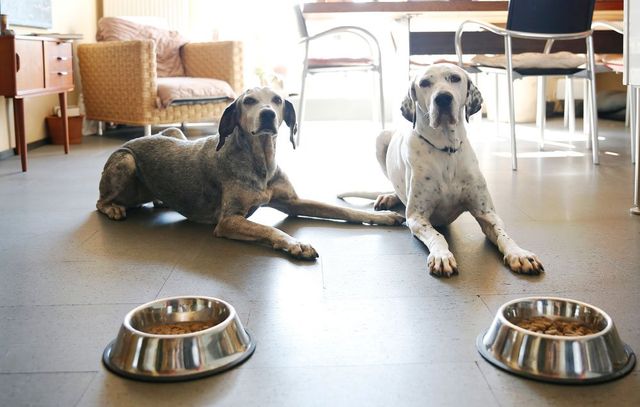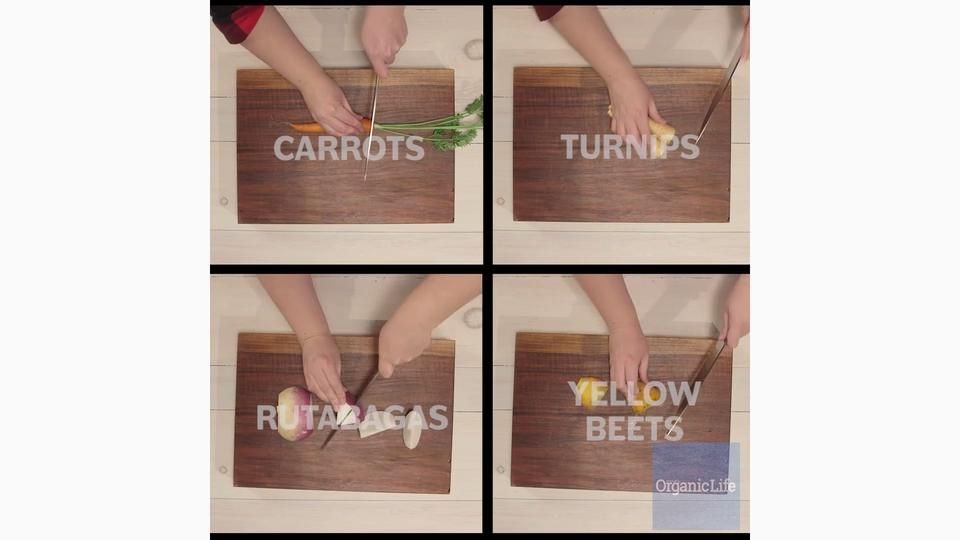This story originally appeared on Rodale’s Organic Life in April 2017.
You stick to a mostly whole foods diet—so it only makes sense that you’d have your dog do the same. And yet, transitioning your pup to a natural diet can feel like a complicated undertaking. Is kibble in or out? Should you go raw or cooked? And if you go the homemade dog food route, how can you make sure your DIY chow is nutritionally balanced?
The good news is, there’s no one right natural diet for dogs. Wholesome, delicious options abound that can help your pup stay as healthy and happy as possible. (But whatever you choose, you should always consult with your dog’s vet before making changes to his food. Most dogs don’t do well with abrupt dietary changes, and chucking the standard store-bought chow could put your pooch at risk for nutritional deficiencies.)
Here's how 4 holistic vets feed their dogs daily.
Monchie, a 3-year-old Pomeranian
We feed Monchie a homemade diet consisting of 50% lean protein (like white meat or white fish) and 50% fresh chopped vegetables (like spinach, kale, green beans, broccoli, cauliflower, or brussels sprouts). Vegetables can be raw or lightly steamed or blanched, depending on your dog's preference. We change up the ingredients depending on what’s in our fridge.
With homemade diets, a comprehensive vitamin mineral supplement is essential. So we add a supplement called PAAWS to balance out the homemade meals.
Feeding dogs a balanced homemade diet is a big step up from commercial food, and it’s fairly straightforward. You want to aim for a mix of ⅓ lean protein, ⅓ long-acting carbs such as rice, and ⅓ vegetables. For dogs who need to lose weight, or if you’re concerned about allergies, cut out the carbs and feed your pooch a mix of ½ lean protein and ½ green veggies. The veggies won’t cause diarrhea or gas.
—Carol Osborne, DVM, founder of Chagrin Falls Pet Clinic
Boe and Hope, 9-year-old mixed breed rescue dogs
Both Boe and Hope have irritable bowel disease and are on restricted diets. I haven’t yet been able to get them on a grain-free or raw diet, which is what I normally recommend for my clients. It’s been a good lesson in feeding what’s right for the particular animal, and both have done well.
They each eat 1½ cups of high-quality lamb and rice food once daily. Lamb is a well-tolerated protein source and the rice seems to balance the protein to carb ratio in a way that works for them. I also give them two daily slippery elm capsules for diarrhea and gastrointestinal inflammation, and 1,000 mg of fish oil once daily to reduce inflammation. As needed, I’ll also give them probiotics and enzymes to help with optimal digestion and provide them with healthy bacteria.
—Anna Maria Gardner, MA Vet MB MRCVS, founder of PetSynergy
Pugsley, a 7-year-old Pug
Pugsley has severe food allergies. Currently, he’s doing a gut rest protocol to ease his gut lining. He’s on an amino acid-based diet (⅓ cup twice daily) to help calm his gut’s immune system and speed healing.
During his gut rest protocol, I’m adding a single-strain, nondairy probiotic, as well as a supplement called NutriGest by Rx Vitamins for Pets. It has glutamine and glucosamine that helps restore the health of the gut lining, cat’s claw and ginger root to decrease gastrointestinal inflammation, and Oregon grape root to help increase good bacteria in the intestinal tract for better digestion.
This diet has eliminated Pugsley’s itchy skin, gas, and loose stool. I prefer to use a fresh, whole food diet, and will start adding one ingredient at a time back in after a few months. After I have a functional ingredient list, I’ll decide on a home-cooked or raw diet, and will add homemade bone broth to his food.
—Angie Krause, DVM, CVA, CCRT, founder of Boulder Holistic Vet
Milli, a 15½-year-old Cocker Spaniel with arthritis
Milli eats twice a day. She’ll have 7 ounces of Allprovide commercial food (either their chicken or turkey), or 8 ounces of Stella & Chewy’s raw rabbit, or 7 to 8 ounces of my homemade Puploaf. I add probiotics and supplements to her food like Naturally Healthy Pets Wellness Formula.
The Puploaf is my own complete, balanced recipe made with a variety of fresh ingredients, including:
+ 90% lean ground beef, beef heart, and liver. Beef is a blood tonic, so it supports circulation and heart health. The heart muscle, specifically, supplies critical amino acids like carnitine and taurine.
+ Chicken gizzards. These add protein, but they’re also a great energy booster.
+ Sardines supply omega-3 fatty acids.
+ Mussels supply trace minerals like zinc and manganese, which are important for tendon/ligament health and immune function.
+ Ginger soothes digestion and decreases joint pain and inflammation.
+ Eggs and their shells. Eggs supply protein and vitamins, while the shells deliver extra calcium.
+ Dark leafy greens and broccoli. Greens support liver and eye health, as well as fiber to feed the good bacteria in the bowel. Broccoli has anti-cancer properties.
+ Mushrooms are also cancer fighters, and decrease swelling and inflammation.
+ Butternut squash provides lutein and beta-carotene for E health.
+ Grapeseed oil provides vitamin E.
+ Cranberries support bladder health.
I rotate these proteins throughout the week—serving poultry, some mammal meat, and some fish to give Milli a balance of amino acids.
—Judy Morgan, DVM, CVA, CVCP, CVFT, author of What’s For Dinner Dexter? Cooking For Your Dog Using Chinese Medicine Theory
Dr. Judy Morgan’s Complete Puploaf Recipe
This recipe can be made with a variety of different protein sources—like ground lean pork, turkey, chicken, or a combination. In general, dogs need 3 to 4 ounces of food per day per 10 pounds of body weight, depending on how active the dog is.
3 pounds beef (90% lean)
8 ounces beef heart
5 ounces beef liver
20 ounces chicken gizzards
3 cans sardines in water, minus the juice
6 ounces mussels (3 teaspoons kelp could replace the mussels for trace minerals)
2 teaspoons ground fresh ginger
5 eggs with shell
3 ounces red pepper
5 ounces mixed dark leafy greens (kale, chard, spinach)
4 ounces broccoli
6 ounces butternut squash
3 tablespoons flax seed or grape seed oil
4 ounces cranberries
4 ounces shiitake mushrooms
1. Grind and mix all ingredients together. Pour into loaf, casserole, or muffin pans. Bake at 325F for 30 to 60 minutes, should be lightly done (juicy in the center), not overcooked.
2. Refrigerate Puploaf in an airtight container and use within 3 to 5 days. (Freeze extra portions). Serve at room temperature.














